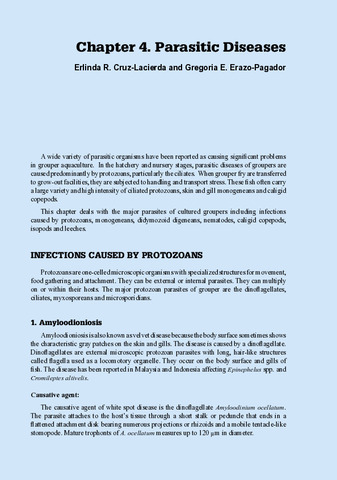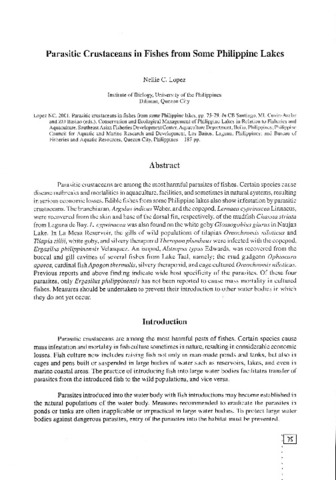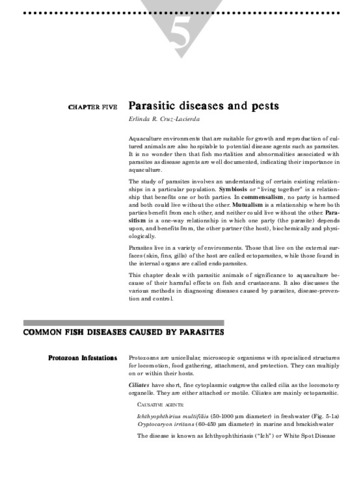Developmental stages of a microsporidian parasite of the white prawn, Penaeus merguiensis de Man 1888
- Global styles
- MLA
- Vancouver
- Elsevier - Harvard
- APA
- Help
Share
Abstract
A microsporidian parasite found to invade the ovaries of the white prawn, Penaeus merguiensis de Man, 1888, causes the whitening of the mature female gonads. Ultrastructure examination of the white ovaries reveal the presence of spores and other developmental stages of the parasite.
The earliest stage observed is the schizont which contains a few cisternae of endoplasmic reticulum, many ribosomes and a thin plasma membrane. The next stage is the sporont characterized by a pansporoblast membrane, an increase in the amount of endoplasmic reticulum, appearance of more vesicles and of polar filament precursors. Diplokaryotic schizonts and sporonts are also found. Division of the sporonts gives rise to uninucleate sporoblasts. At this stage, the spore organelles start to form and the cell acquires a degree of plarity. The polar filament and the polar sao appear and the sporont membrane complex develops into a sporoblast wall. The sporoblast is transformed into a spore with a polar cap, posterior vacuole, polaroplast, and two laters of spore wall, the exospore and the endospore. The polar filament is a tubular structure consisting of seven coils which after the second coil taper abruptly distally.
All these stages of development of the parasite are observed in the infected ovaries within which its life cycle is completed. A probable mode of transmission and life cycle of the parasite is presented.
Suggested Citation
Baticados, M. C. L., & Enriquez, G. L. (1982). Developmental stages of a microsporidian parasite of the white prawn, Penaeus merguiensis de Man 1888. Natural and Applied Science Bulletin , 34(3), 255-270. http://hdl.handle.net/10862/1123
Type
ArticleISSN
0028-0682Collections
- Journal Articles [1258]
Related items
Showing items related by title, author, creator and subject.
-
Parasitic diseases
Cruz-Lacierda, Erlinda R.; Erazo-Pagador, Gregoria E. (Aquaculture Department, Southeast Asian Fisheries Development Center, 2004)A wide variety of parasitic organisms have been reported as causing significant problems in grouper aquaculture. In the hatchery and nursery stages, parasitic diseases of groupers are caused predominantly by protozoans, ... -
Parasitic crustaceans in fishes from some Philippine Lakes
Lopez, Nellie C. (Aquaculture Department, Southeast Asian Fisheries Development Center; Philippine Council for Aquatic and Marine Research and Development (PCAMRD), Department of Science and Technology; Bureau of Fisheries and Aquatic Resources, 2001)Parasitic crustaceans are among the most harmful parasites of fishes. Certain species cause disease outbreaks and mortalities in aquaculture, facilities, and sometimes in natural systems, resulting in serious economic ... -
Parasitic diseases and pests
Cruz-Lacierda, Erlinda R. (Aquaculture Department, Southeast Asian Fisheries Development Center, 2001)A wide variety of parasites have been identified as causing significant economic losses in fish and shrimp culture. Most of these parasites are difficult to control effectively with a single measure. The control of parasites ...





